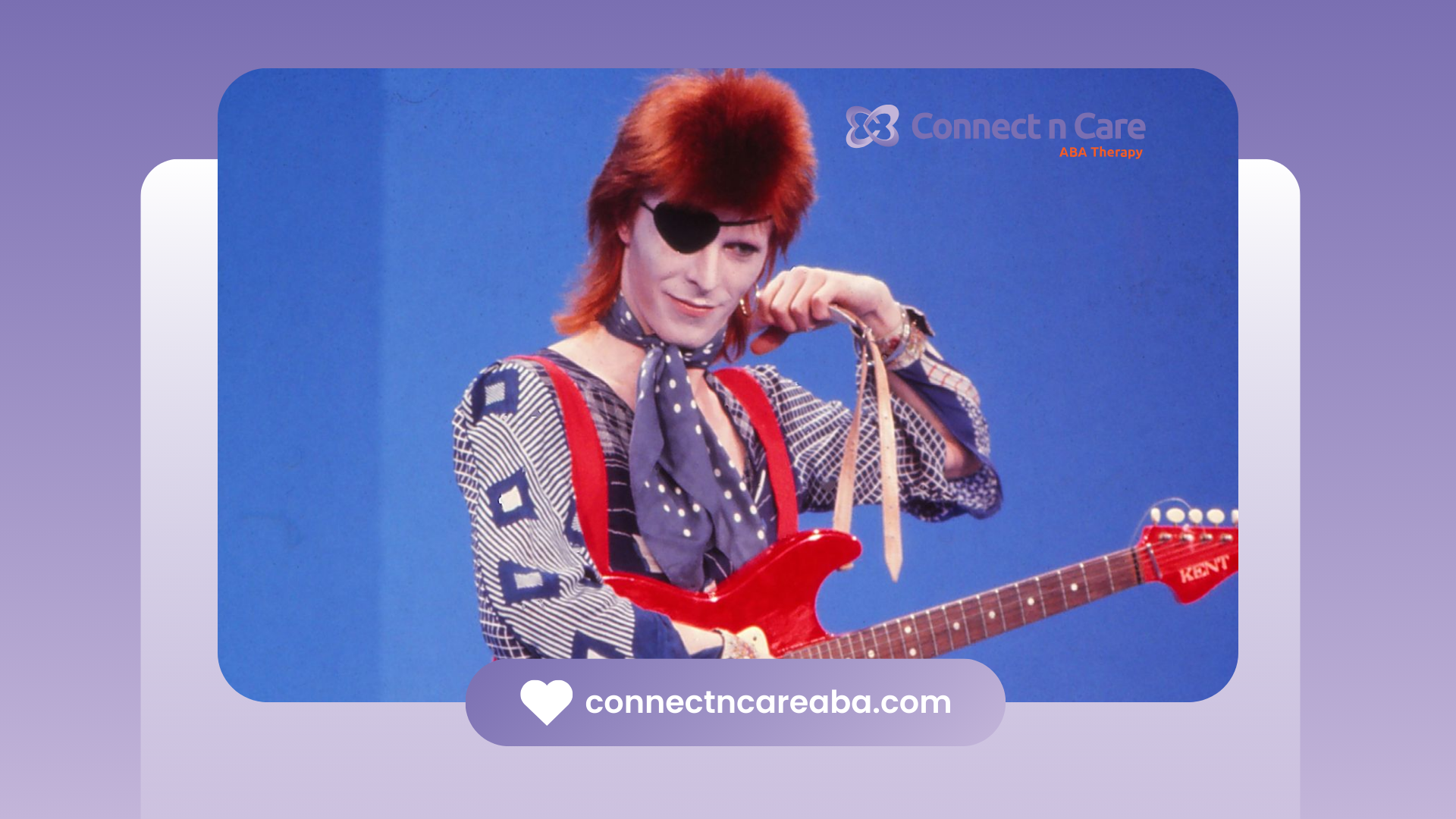Key Highlights
- David Byrne, the lead singer of Talking Heads, exhibits unique behavioral traits that have fueled speculation about him being on the autism spectrum.
- Byrne himself has indicated being diagnosed with Asperger’s, a term formerly used to categorize individuals with autism who are high-functioning.
- Byrne's artistic expression, particularly in his music and stage presence, often reflects themes of social awkwardness, anxiety, and a desire for connection, resonating with some individuals on the spectrum.
- Public speculation about a public figure's health raises ethical considerations, as diagnoses should come from qualified professionals, respecting individuals' privacy.
- Examining art through the lens of neurodiversity encourages a deeper understanding of creativity and the human experience.
Introduction
David Byrne, who is the intriguing leader of the well-known band Talking Heads, has fascinated fans for many years with his special approach to music and art. In his performances, his unusual stage presence includes erratic movements and a serious way of speaking. Many people have wondered if Byrne could be on the autism spectrum because of this. In this analysis, we will look into Byrne's public image, his artistic expression, and the wider discussions in society about autism and neurodiversity.
Understanding Autism Spectrum Disorder (ASD)
Understanding Autism Spectrum Disorder (ASD) is about seeing how different people experience and understand their surroundings. For instance, someone like David Byrne, who is known for his work with Talking Heads, may interact with social norms and connections in a different way because of his unique viewpoint within the autistic spectrum. When making sense of emotions and actions, as shown in songs like "Psycho Killer," he might face challenges that affect his social skills and communication. Yet, within the autistic community, individuals such as David Byrne find a sense of belonging, celebrating their true stories and strengths in a neurotypical world.
Defining Autism: A Broad Spectrum
The autism spectrum is large and varied, covering many different experiences and challenges. People on the spectrum might have sensory sensitivities, deal with social situations in their own way, and have passions for certain interests. In the neurotypical world, the complicated social norms can sometimes seem overwhelming and hard to grasp.
It’s important to understand that autism is not uniform. Each autistic person has their own strengths, talents, and viewpoints. The way autism appears in one individual can look completely different from how it appears in another.
To truly understand the nature of the autism spectrum, we need to acknowledge this diversity. We should approach every person with empathy, respect, and an open mind to learn from their special experiences.
Signs and Symptoms of ASD in Adults and Children
ASD can show up in different ways for children compared to adults. Children may show delays in language development, have trouble with imaginative play, or show repetitive movements like hand flapping. In contrast, adults might have trouble with eye contact during conversations, find it hard to pick up on social cues, or struggle with changes in their routine.
In the autistic community, it’s important to point out that these differences should not be seen as deficits but rather as variations in how humans can express themselves and how our brains can work.
By recognizing these signs and symptoms, we can help with early identification, and intervention, and offer the right support for individuals with ASD during their lives.
David Byrne's Public Persona and ASD Speculations
In his career, David Byrne has built a mysterious public image. Often, he seems a bit awkward or detached during interviews, but he puts on amazing performances when on stage. This difference has led to thoughts about his neurodiversity. Many fans and critics notice behaviors that might show traits of ASD.
From Byrne's public image, we can see parts of his personality. Yet, it's important to be careful when making these observations. Concluding firmly about someone's health just from what we see on the outside isn’t always trustworthy and could be disrespectful.
Analyzing Byrne's Unique Behavioral Traits
Byrne’s performance style is really interesting and unique. His movements can look jerky and sometimes robotic, it contrasts a lot with the deep feelings in his songs. In tracks like "Psycho Killer" and "Making Sense," we see a battle with social anxiety and a wish for connection, which are themes often felt by those on the autism spectrum.
The line, "Don't touch me, I'm a real live wire," from "Psycho Killer," might show what it's like to feel sensory overload, something many autistic people go through. These themes in the lyrics, along with Byrne’s way of moving, have led people to think about his potential neurodiversity.
Still, we should be careful not to label someone based just on their art. Even if Byrne’s music might connect with the experiences of those on the autism spectrum, these links are really up to personal interpretation.
Byrne's Social Interactions and Communication Skills
In interviews, Byrne often comes across as a quiet, thoughtful person who doesn't seem to like being in the spotlight. Under eye contact, his discomfort and not joining in typical social banter have led some to think he might be autistic. Yet, if we say his actions are only because of autism, we may keep stereotypes alive.
Many different things can lead to social awkwardness. So, it's important to keep in mind that not everyone who struggles with social interaction is autistic. Additionally, autistic people express themselves and socialize in many unique ways. Thinking that there's just one way of being based on surface behavior is not fair.
By focusing just on these aspects, we miss the fullness and depth of Byrne's communication, especially how he connects with audiences through music and performance.
The Artistic Expression of David Byrne
Byrne's creativity goes beyond just music. It includes film, visual art, and writing. In a lot of his work, he deals with feelings of being alone, observations about society, and the quest for meaning in a confusing world. These feelings connect with everyone, regardless of whether they have different ways of thinking.
For some, linking Byrne's art to possible ASD traits might seem natural, but if we only look at this part, we might miss the bigger picture of his creativity. His work goes beyond simple labels, encouraging people to think about shared questions regarding who we are, how we connect with others, and what it means to be human.
The Influence of Neurodiversity on Creativity
The idea of neurodiversity goes against how the medical world usually sees some neurological conditions, treating them as problems. Instead, it sees these conditions as variations in how people are wired, resulting in a wider range of perceptions and thinking styles. Through this diversity, artistic expression can flourish, finding inspiration in different ways people see and engage with life.
Due to their unique traits, many artists across various fields show signs related to ASD, such as deep focus, careful attention to detail, and thinking outside the box. Because of these qualities, they can create amazing work that pushes creative limits. Nonetheless, it is important to remember not to link specific diagnoses with artistic skill or simply define artists by their neurological traits.
To understand how neurodiversity affects creativity, we need to value the various ways people think, process, and share their inner experiences, adding depth to the artistic world.
Byrne's Approach to Music and Performance
Byrne had a different way of making music with Talking Heads. Instead of sticking to usual song formats, he brought in sounds from funk, punk, and world music, pushing what pop music could be. Through his lyrics, he often talked about feeling alone, commented on society, and sought meaning in a fast-changing world.
@_triggerhappy_ Song: Life During Wartime LIVE by Talking Heads #talkingheads #davidbyrne #dance #groove #fyp #fypシ #funny #music #song #live ♬ original sound - TriggerHappy
During live shows, his creative vision expanded even more. In the famous "Stop Making Sense" concert film by Jonathan Demme, Byrne’s strange stage moves and simple setups stood out, changing what people expected from rock concerts.
With this special mix of new music and theatrical presentations, Byrne became known as a creative artist who blurred the lines between music, theater, and performance art.
The Role of Art in Understanding ASD
Art gives a strong way for individuals with ASD to share who they are, talk about their experiences, and connect with other people. Through artistic expression, they can let out their feelings, explore how they sense the world, and find ways to understand social situations.
By looking at art made by autistic individuals, we learn about their unique views, the hurdles they face, and their successes. Art helps link different ways of seeing the world, boosting empathy and understanding.
By supporting autistic artists and valuing their creations, we not only enrich our cultural scene but also help build a more accepting and inclusive society.
Public Figures and Autism Awareness
When public figures talk about their experiences with autism, it can really change how people see the condition. They help reduce the stigma and promote understanding. Through their platforms, they can challenge stereotypes and show the diversity in the autistic community while pushing for more inclusivity.
On the other hand, it’s important to respect those public figures who decide not to share their personal health details and not to guess their diagnoses without their permission.
The Impact of Celebrity Disclosures on Autism Perception
When celebrities talk about living with autism, it can really help change how people see it. By sharing their stories, famous people make it easier for everyone to talk about neurodiversity. Through their experiences, they challenge wrong ideas and help reduce stigma. Such stories offer visibility and representation for a group that is often misunderstood or pushed aside.
Nevertheless, we should keep in mind that everyone's experience with autism is different. While narratives from celebrities are helpful, they don't show the whole range of what autism means. Public figures who decide to share their stories usually want to increase awareness, encourage acceptance, and push for more support for the autistic community.
Through understanding both the effects and limits of celebrity disclosures, we can help make discussions about autism more informed and compassionate.
How Public Figures Shape Autism Advocacy
Public figures who say they are on the autism spectrum help a lot with advocacy work. With their platform and influence, they can focus attention on important issues like getting the right resources, finding jobs, and fostering social inclusion for autistic individuals.
Through sharing their stories, they can break down stereotypes, encourage acceptance, and motivate others in the community to feel proud of who they are. Their advocacy can also lead to changes in policy and more funding for autism research and support services.
Still, we need to understand that the job of autism advocacy shouldn't just be on public figures. To build a society that is more welcoming and supportive, everyone needs to work together, including individuals, communities, and policymakers.
The Talking Heads Era and Its Resonance with the ASD Community
Talking Heads came onto the scene in a time when society was changing a lot, around the late 1970s and early 1980s. With their music, which mixed art-rock, punk, and funk, they captured the worries of a generation dealing with social changes and fast technological progress.
Through Byrne's lyrics, they discussed feelings of isolation, consumer habits, and the quest for personal identity in a world becoming more focused on technology. These ideas resonated with a generation looking for realness and connection, reaching out to those who felt different, especially within the growing autistic community.
Dissecting the Lyrics and Music Videos
Talking Heads' music often explored themes like social awkwardness, anxiety, and a wish to connect. For some people on the autism spectrum, these themes really strike a chord. For instance, songs such as "This Must Be the Place (Naive Melody)" and "Heaven" show a deep desire for belonging and a quest for meaning in a world that can feel overwhelming. Many people, whether they are neurodiverse or not, find these feelings relatable.
By looking at the lyrics and music videos in a new way, one can see connections that match experiences shared by individuals with ASD. For example, the repetitive style of some Talking Heads songs and the often robotic dance moves of Byrne can seem particularly familiar to those on the spectrum, along with the themes of social isolation present in their music.
Yet, when trying to assign specific meanings based only on these observations, it is essential to remember that doing so without clear confirmation from the artist could lead to misunderstandings. Ultimately, art is subjective, meaning that what resonates with one person may provide a different perspective for someone else.
"Stop Making Sense": A Closer Look at Byrne's Iconic Performance
The 1984 concert film "Stop Making Sense" shows the amazing energy of Talking Heads at their best. With David Byrne's performance, it’s hard not to be drawn in, as his stage presence combines awkwardness with charm. His robot-like dance moves, strange gestures, and serious delivery became famous, making him a true original.
In the film, Byrne's outfits change, reaching the well-known oversized suit at the end. This change in appearance can be seen as a symbol for the mask many autistic people feel they have to wear in social settings, fitting into society's strict rules that can be overwhelming.
"Stop Making Sense" does more than just show a concert; it serves as a look at identity, performance, and the need for connection in a busy world. Byrne's unusual way of performing on stage keeps interesting conversations going about neurodiversity and artistic expression.
David Byrne's Contributions Beyond Music
In addition to being famous for his music with Talking Heads, David Byrne does a lot more than just that. Throughout his career, he has shown himself to be a versatile artist who works in different areas, such as film, photography, opera, and writing. By diving into these various fields, he demonstrates his wide-ranging creative interests. With a passionate desire to explore, he constantly seeks new ideas and challenges, pushing the limits of what art can be.
Byrne's Work in Film and Literature
David Byrne's creative work goes beyond just music. With the film "True Stories," which he directed and starred in back in 1986, he offered a fun look at small-town life and the quirky things about American culture. The film displays Byrne's unusual sense of humor and sharp observation, showing his interest in understanding human behavior better.
Through his interest in filmmaking, Byrne has also written several books. One notable work is "Bicycle Diaries," where he shares his thoughts and experiences about city life as seen from a cyclist's viewpoint. His writing captures personal stories, social insights, and deep thoughts, highlighting his curious nature and eagerness to dive into various subjects.
By trying new things in film and writing, Byrne strengthens his reputation as a talented artist who isn't afraid to push against creative limits. His works continue to engage viewers with their special mix of humor, thoughtful insights, and fresh viewpoints.
Advocacy, Art, and Autism: Connecting the Dots
Byrne’s work, whether he meant it or not, blends into important discussions about autism awareness and advocacy. Even though he hasn’t clearly called his art a comment on ASD, the ideas in his music and shows often connect with people who have personal experiences with autism.
Through his thoughts on feeling lonely, the quest for belonging, and the need for real connections, he touches the hearts of those who deal with a world that can be tough and confusing. This unplanned connection shows how art can help people understand each other better, no matter their different experiences.
While we should be careful not to label or diagnose anyone without their permission, the link between Byrne’s artistic work and themes important to the autistic community highlights why it's necessary to keep talking about neurodiversity and how art helps promote acceptance.
The Debate Around Diagnosing Public Figures
Speculating about the mental or neurological health of famous people just based on how they appear in public brings up many ethical worries. It’s important to consider that making a diagnosis is complicated and needs careful assessment by trained experts.
By engaging in armchair diagnosis, we disrespect the privacy and unique experiences of these public figures and create harmful stereotypes. Instead of jumping to conclusions, let's work on creating respectful conversations about neurodiversity and increasing awareness about mental health.
Ethical Considerations in Speculating About Health
When we talk about the health of public figures, we should always think about ethics first. Promising not to speculate on someone’s health based just on their fame is important because it's often wrong and can be harmful. It's essential to keep in mind that celebrities deserve privacy about their health just like everyone else.
Focusing on spreading rumors or making guesses about medical conditions can increase the stigma around mental health and neurodiversity. Although public figures have a voice, they also carry a great responsibility. It's important to create a space where people comfortably share their health information without feeling judged or invaded.
Showing respect in conversations about mental health and neurodiversity needs careful reporting, checking facts, and dedication to respecting privacy and choices instead of leaning toward flashy stories or wild guesses.
The Role of Media in Shaping Narratives
Media has a strong impact on how people talk about mental health and neurodiversity. Through responsible reporting, the public can be educated, misconceptions can be challenged, and understanding can be promoted. On the other hand, when the media sensationalizes or speculates about someone’s health, it can spread harmful stereotypes and add to stigma.
When discussing mental health or neurodiversity topics, media outlets should focus on being accurate, sensitive, and ethical. By seeking input from experts, they can include different viewpoints and avoid using words that support stereotypes. These steps are necessary for creating a more understanding and caring public conversation.
With a respectful and thoughtful approach to these topics, media can help raise awareness, lower stigma, and support the rights and well-being of those living with mental health conditions and neurodiversity.
Community Voices: What Fans and Critics Say
On online forums and social media platforms, people are having lively discussions about David Byrne and his possible ASD. Through these discussions, fans, critics, and people who identify as autistic share their thoughts on his actions and lyrics, relating them to their own lives.
Because of these conversations, there is a growing need for open talks about neurodiversity. Moreover, it’s important to show different experiences in popular culture while also encouraging careful thinking about the morality of guessing about the health of public figures.
Perspectives from the Autism Community
In the autism community, David Byrne’s music and performances can bring out many different feelings and thoughts. For some people on the spectrum, his artistic expressions feel relatable. They might connect with his themes of social awkwardness, anxiety, and their quest for connection in a world that sometimes seems too much.
Through his work, David Byrne has, whether by design or not, started discussions about autism and neurodiversity. Because of this, many find comfort and recognition in what he creates. His special style and way of performing appeals to those who often see themselves as outsiders. This celebrates being different and pushes back against societal norms.
Yet, it’s important to remember not to make sweeping statements. Experiences in the autism community vary widely. Not everyone on the spectrum will feel connected to Byrne’s work, and that’s completely fine. The wonderful thing about art is its subjectivity, which lets people engage with it in their own personal and meaningful ways.
Critiques and Praises from Music and Art Critics
David Byrne's work in the arts has received both applause and criticism from music and art reviewers. Through his creative methods in music-making, along with his unusual stage presence, he has made his mark as a true original. With his thought-provoking lyrics, he keeps pushing genre limits and questioning traditional ideas of performance.
Over many years, audiences have been drawn in by his ability to blend art-rock, funk, and world music influences, while his quirky yet engaging presence makes a lasting impression. Critics often highlight his skills with lyrics, showing how he can tackle complex themes with humor and smarts, all while reflecting the worries of a generation seeking purpose in a fast-paced world.
Alongside his successes, like any artist wanting to stand out, Byrne has also encountered criticism. Some people see his work as hard to understand, find his stage persona off-putting, or think his musical experiments are upsetting. Still, this very choice to challenge expectations and stick to his unique vision has solidified his place as a groundbreaking artist.
Conclusion
In conclusion, the conversation about David Byrne's possible autism spectrum disorder helps us see how art, neurodiversity, and how people think all connect. While thinking about the health of public figures, we need to keep ethics in mind. This highlights needing respectful talks and understanding. Through his artistic expressions and his unique traits, Byrne gives us helpful views on creativity and autism awareness. As we move through discussions on mental health and neurodiversity, we should think about how celebrity claims can influence what society thinks about autism. Ultimately, recognizing and valuing different viewpoints helps create a more welcoming and caring society.
Frequently Asked Questions
Is David Byrne officially diagnosed with Autism Spectrum Disorder?
David Byrne noted that he was diagnosed with Asperger’s Syndrome. With this in mind, it’s crucial to understand that such diagnoses are private matters. Individuals should decide when and how to share this information.
How does David Byrne’s artistic style reflect traits common in individuals with ASD?
In Byrne's lyrics, themes of social anxiety, challenges with social norms, and strict interpretations of the world often come up. These themes connect with experiences that many people on the autistic spectrum have, leading to feelings of understanding and identifying with the messages in the songs.
Can public discussions about celebrities and ASD contribute positively to awareness?
By talking about celebrities and ASD in a respectful and ethical way, we can help raise awareness. Through these conversations, we can challenge stereotypes. Furthermore, we can destigmatize neurodiversity. This all contributes to creating a more inclusive social environment.









